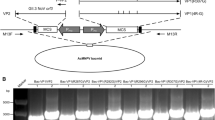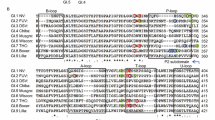Abstract
Attachment of human noroviruses to histo blood group antigens (HBGAs) is thought to be critical for the infection process. Therefore, we have determined binding epitopes of synthetic type 1 to 6 blood group A- and B-tetrasaccharides binding to GII.4 human Norovirus virus like particles (VLPs) using STD NMR experiments. So far, little information is available from crystal structure analysis studies on the interactions of the reducing-end sugars with the protruding domain (P-domain) of the viral coat protein VP1. Here, we show that the reducing-end sugars make notable contacts with the protein surface. The type of glycosidic linkage, and the identity of the sugar at the reducing end modulate HBGA recognition. Most strikingly, type 2 structures yield only very poor saturation transfer indicating impeded binding. This observation is in accordance with previous mass spectrometry based affinity measurements, and can be understood based on recent crystal structure data of a complex of highly homologous GII.4 P-dimers with H-type 2 trisaccharide where the N-acetyl group of the reducing N-acetyl glucosamine residue points towards a loop comprising amino acids Q390 to H395. We suggest that in our case, binding of type 2 A- and B-tetrasaccharides leads to steric conflicts with this loop. In order to identify factors determining L-Fuc recognition, we also synthesized GII.4 VLPs with point mutations D391A and H395A. Prior studies had suggested that these residues, located in a second shell around the L-Fuc binding site, assist L-Fuc binding. STD NMR experiments with L-Fuc and B-trisaccharide in the presence of wild type and mutant VLPs yield virtually identical binding epitopes suggesting that these two mutations do not significantly alter HBGA recognition. Our study emphasizes that recognition of α−(1→2)-linked L-Fuc residues is a conserved feature of GII.4 noroviruses. However, structural variation of the HBGA core structures clearly modulates molecular recognition depending on the genotype.








Similar content being viewed by others
References
Ahmed, S.M., Hall, A.J., Robinson, A.E., Verhoef, L., Premkumar, P., Parashar, U.D., Koopmans, M., Lopman, B.A.: Global prevalence of norovirus in cases of gastroenteritis: a systematic review and meta-analysis. Lancet Infect. Dis. 14(8), 725–730 (2014). doi:10.1016/s1473-3099(14)70767-4
Lee, B.Y., McGlone, S.M., Bailey, R.R., Wettstein, Z.S., Umscheid, C.A., Muder, R.R.: Economic impact of outbreaks of norovirus infection in hospitals. Infect. Control Hosp. Epidemiol: the official journal of the Society of Hospital Epidemiologists of America. 32(2), 191–193 (2011). doi:10.1086/657910
Koo, H.L., Ajami, N., Atmar, R.L., DuPont, H.L.: Noroviruses: the principal cause of foodborne disease worldwide. Discov. Med. 10(50), 61–70 (2010)
Glass, R.I., Parashar, U.D., Estes, M.K.: Norovirus gastroenteritis. N. Engl. J. Med. 361, 1776–1785 (2009)
Tan, M., Jiang, X.: Norovirus-host interaction: implications for disease control and prevention. Expert Rev. Mol. Med. 9(19), 1–22 (2007). doi:10.1017/S1462399407000348
Lindesmith, L., Moe, C., Marionneau, S., Ruvoen, N., Jiang, X., Lindblad, L., Stewart, P., LePendu, J., Baric, R.: Human susceptibility and resistance to Norwalk virus infection. Nat. Med. 9(5), 548–553 (2003). doi:10.1038/nm860
Huang, P., Farkas, T., Marionneau, S., Zhong, W., Ruvoen-Clouet, N., Morrow, A.L., Altaye, M., Pickering, L.K., Newburg, D.S., LePendu, J., Jiang, X.: Noroviruses bind to human ABO, Lewis, and secretor histo-blood group antigens: identification of 4 distinct strain-specific patterns. J Infect Dis. 188(1), 19–31 (2003). doi:10.1086/375742
Nystrom, K., Le Gall-Recule, G., Grassi, P., Abrantes, J., Ruvoen-Clouet, N., Le Moullac-Vaidye, B., Lopes, A.M., Esteves, P.J., Strive, T., Marchandeau, S., Dell, A., Haslam, S.M., Le Pendu, J.: Histo-blood group antigens act as attachment factors of rabbit hemorrhagic disease virus infection in a virus strain-dependent manner. PLoS Pathog. 7(8), e1002188 (2011). doi:10.1371/journal.ppat.1002188
Bartnicki, E., Cunha, J.B., Kolawole, A.O., Wobus, C.E.: Recent advances in understanding noroviruses. F1000Research. 6, 1–9 (2017). doi:10.12688/f1000research.10081.1
Schroten, H., Hanisch, F.G., Hansman, G.S.: Human norovirus interactions with Histo-blood group antigens and human milk oligosaccharides. J. Virol. 90(13), 5855–5859 (2016). doi:10.1128/JVI.00317-16
Prasad, B.V., Hardy, M.E., Dokland, T., Bella, J., Rossmann, M.G., Estes, M.K.: X-ray crystallographic structure of the Norwalk virus capsid. Science. 286(5438), 287–290 (1999)
Chen, R., Neill, J.D., Estes, M.K., Prasad, B.V.: X-ray structure of a native calicivirus: structural insights into antigenic diversity and host specificity. Proc. Natl. Acad. Sci. U. S. A. 103(21), 8048–8053 (2006). doi:10.1073/pnas.0600421103
Cao, S., Lou, Z., Tan, M., Chen, Y., Liu, Y., Zhang, Z., Zhang, X.C., Jiang, X., Li, X., Rao, Z.: Structural basis for the recognition of blood group trisaccharides by norovirus. J. Virol. 81(11), 5949–5957 (2007). doi:10.1128/JVI.00219-07
de Graaf, M., van Beek, J., Koopmans, M.P.: Human norovirus transmission and evolution in a changing world. Nat. Rev. Microbiol. 14(7), 421–433 (2016). doi:10.1038/nrmicro.2016.48
Tan, M., Xia, M., Chen, Y., Bu, W., Hegde, R.S., Meller, J., Li, X., Jiang, X.: Conservation of carbohydrate binding interfaces: evidence of human HBGA selection in norovirus evolution. PLoS ONE. 4(4), e5058 (2009). doi:10.1371/journal.pone.0005058
Singh, B.K., Leuthold, M.M., Hansman, G.S.: Human noroviruses' fondness for histo-blood group antigens. J. Virol. 89(4), 2024–2040 (2015). doi:10.1128/JVI.02968-14
Hansman, G.S., Taylor, D.W., McLellan, J.S., Smith, T.J., Georgiev, I., Tame, J.R., Park, S.Y., Yamazaki, M., Gondaira, F., Miki, M., Katayama, K., Murata, K., Kwong, P.D.: Structural basis for broad detection of genogroup II noroviruses by a monoclonal antibody that binds to a site occluded in the viral particle. J. Virol. 86(7), 3635–3646 (2012). doi:10.1128/JVI.06868-11
Shanker, S., Choi, J.M., Sankaran, B., Atmar, R.L., Estes, M.K., Prasad, B.V.: Structural analysis of histo-blood group antigen binding specificity in a norovirus GII.4 epidemic variant: implications for epochal evolution. J. Virol. 85(17), 8635–8645 (2011). doi:10.1128/JVI.00848-11
Fiege, B., Rademacher, C., Cartmell, J., Kitov, P.I., Parra, F., Peters, T.: Molecular details of the recognition of blood group antigens by a human norovirus as determined by STD NMR spectroscopy. Angew. Chem. 51(4), 928–932 (2012). doi:10.1002/anie.201105719
Mallagaray, A., Rademacher, C., Parra, F., Hansman, G., Peters, T.: STD NMR titrations reveal complex multistep-binding of L-Fucose to norovirus particles. Glycobiology. 27(1), 80–86 (2017). doi:10.1093/glycob/cww070
Mallagaray, A., Lockhauserbäumer, J., Hansman, G.S., Uetrecht, C., Peters, T.: Attachment of norovirus to Histo blood group antigens: a cooperative multistep process. Angew. Chem. Int. Ed. 54(41), 12014–12019 (2015)
Koromyslova, A.D., Leuthold, M.M., Bowler, M.W., Hansman, G.S.: The sweet quartet: binding of fucose to the norovirus capsid. Virology. 483, 203–208 (2015). doi:10.1016/j.virol.2015.04.006
Han, L., Kitova, E.N., Tan, M., Jiang, X., Pluvinage, B., Boraston, A.B., Klassen, J.S.: Affinities of human histo-blood group antigens for norovirus capsid protein complexes. Glycobiology. 25, 170–180 (2015). doi:10.1093/glycob/cwu100
Mayer, M., Meyer, B.: Group epitope mapping by saturation transfer difference NMR to identify segments of a ligand in direct contact with a protein receptor. J. Am. Chem. Soc. 123, 6108–6117 (2001)
Mayer, M., Meyer, B.: Characterization of ligand binding by saturation transfer difference NMR spectroscopy. Angew. Chem. Int. Ed. 38(12), 1784–1787 (1999)
Meloncelli, P.J., West, L.J., Lowary, T.L.: Synthesis and NMR studies on the ABO histo-blood group antigens: synthesis of type III and IV structures and NMR characterization of type I-VI antigens. Carbohydr. Res. 346(12), 1406–1426 (2011). doi:10.1016/j.carres.2011.03.008
Meloncelli, P.J., Lowary, T.L.: Synthesis of ABO histo-blood group type I and II antigens. Carbohydr. Res. 345(16), 2305–2322 (2010). doi:10.1016/j.carres.2010.08.012
Meloncelli, P.J., Lowary, T.L.: Synthesis of ABO Histo-blood group type V and VI antigens. Aust. J. Chem. 62, 558–574 (2009)
Liu, W., Chen, Y., Jiang, X., Xia, M., Yang, Y., Tan, M., Li, X., Rao, Z.: A unique human norovirus lineage with a distinct HBGA binding Interface. PLoS Pathog. 11(7), e1005025 (2015). doi:10.1371/journal.ppat.1005025
Singh, B.K., Leuthold, M.M., Hansman, G.S.: Structural constraints on human norovirus binding to histo-blood group antigens. mSphere. 1(2), (2016). doi:10.1128/mSphere.00049-16
Pengelley, S.C., Chapman, D.C., Mark Abbott, W., Lin, H.H., Huang, W., Dalton, K., Jones, I.M.: A suite of parallel vectors for baculovirus expression. Protein Expr. Purif. 48(2), 173–181 (2006). doi:10.1016/j.pep.2006.04.016
Zhao, Y., Chapman, D.A.G., Jones, I.M.: Improving baculovirus recombination. Nucleic Acids Res. 31(2), 6e-6 (2003). doi:10.1093/nar/gng006
Kirschner, K.N., Yongye, A.B., Tschampel, S.M., Gonzalez-Outeirino, J., Daniels, C.R., Foley, B.L., Woods, R.J.: GLYCAM06: a generalizable biomolecular force field. Carbohydrates. J. Comput. Chem. 29(4), 622–655 (2008). doi:10.1002/jcc.20820
Tan, M., Xia, M., Cao, S., Huang, P., Farkas, T., Meller, J., Hegde, R.S., Li, X., Rao, Z., Jiang, X.: Elucidation of strain-specific interaction of a GII-4 norovirus with HBGA receptors by site-directed mutagenesis study. Virology. 379(2), 324–334 (2008). doi:10.1016/j.virol.2008.06.041
Nasir, W., Frank, M., Kunze, A., Bally, M., Parra, F., Nyholm, P.G., Hook, F., Larson, G.: Histo-blood group antigen presentation is critical for norovirus VLP binding to glycosphingolipids in model membranes. ACS Chem. Biol. (2017). doi:10.1021/acschembio.7b00152
Rademacher, C., Krishna, N.R., Palcic, M., Parra, F., Peters, T.: NMR experiments reveal the molecular basis of receptor recognition by a calicivirus. J. Am. Chem. Soc. 130(11), 3669–3675 (2008)
Jiang, X., Wang, M., Graham, D.Y., Estes, M.K.: Expression, self-assembly, and antigenicity of the Norwalk virus capsid protein. J. Virol. 66(11), 6527–6532 (1992)
Rademacher, C., Guiard, J., Kitov, P.I., Fiege, B., Dalton, K.P., Parra, F., Bundle, D.R., Peters, T.: Targeting norovirus infection-multivalent entry inhibitor design based on NMR experiments. Chemistry. 17(27), 7442–7453 (2011). doi:10.1002/chem.201003432
Rademacher, C., Peters, T.: Molecular recognition of ligands by native viruses and virus-like particles as studied by NMR experiments. In: Peters, T. (ed.) Topics in Current Chemistry, Bioactive Conformation II, Vol. 273. Bioactive Conformation II, pp. 183–202. Springer, Berlin Heidelberg (2008)
Mayer, M., James, T.L.: NMR-based characterization of phenothiazines as a RNA binding scaffold. J. Am. Chem. Soc. 126(13), 4453–4460 (2004). doi:10.1021/ja0398870
Acknowledgments
Financial support from the DFG (PE494/8-1 and PE494,12-1 with the research unit FOR2327) is gratefully acknowledged. The authors thank the University of Lübeck and the Alberta Glycomics Centre for financial support. The DFG and the state of Schleswig-Holstein are thanked for a grant for the cryogenic probe (HBFG 101/192-1). FP and KPD were supported by grant GRUPIN14-099 from Principado de Asturias (Spain), cofinanced by FEDER. Prof. Monica Palcic (University of Victoria, BC, Canada) is thanked for a kind gift of the blood group B-trisaccharide. Dr. Alvaro Mallagaray from the University of Lübeck and Dr. Grant Hansman from the DKFZ in Heidelberg are thanked for stimulating discussions. Dr. Thorsten Biet, Thies Köhli, and Wilfried Hellebrandt are thanked for technical assistance.
Author information
Authors and Affiliations
Corresponding author
Ethics declarations
Conflicts of interest
The authors declare that they have no conflicts of interest.
Ethical approval
This article does not contain any studies with human participants or animals performed by any of the authors.
Electronic supplementary material
ESM 1
(PDF 386 kb)
Rights and permissions
About this article
Cite this article
Fiege, B., Leuthold, M., Parra, F. et al. Epitope mapping of histo blood group antigens bound to norovirus VLPs using STD NMR experiments reveals fine details of molecular recognition. Glycoconj J 34, 679–689 (2017). https://doi.org/10.1007/s10719-017-9792-5
Received:
Revised:
Accepted:
Published:
Issue Date:
DOI: https://doi.org/10.1007/s10719-017-9792-5




